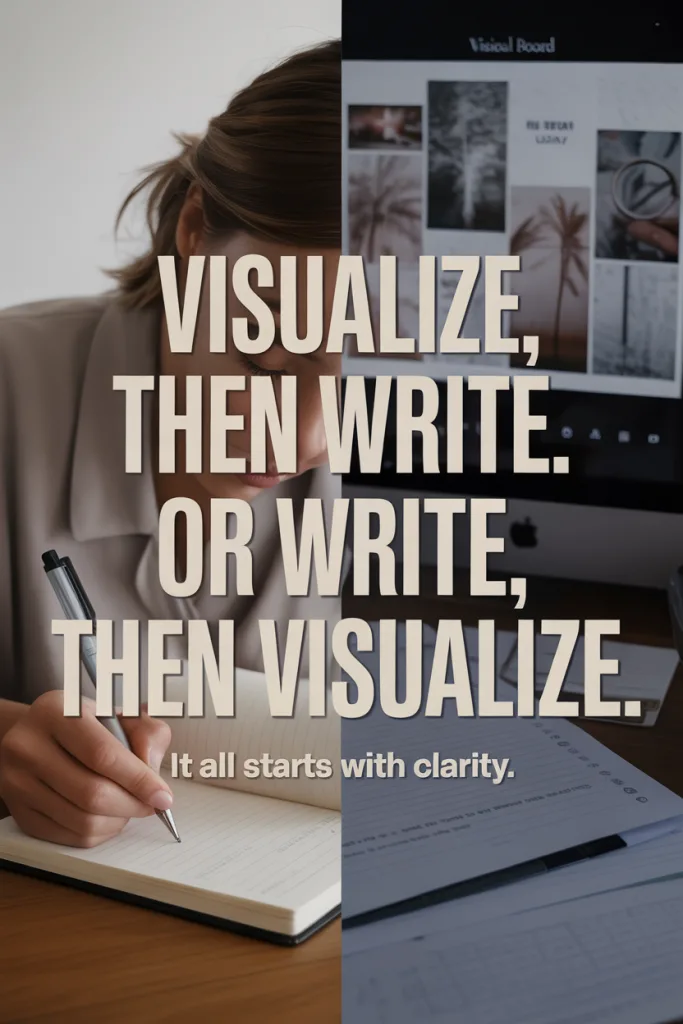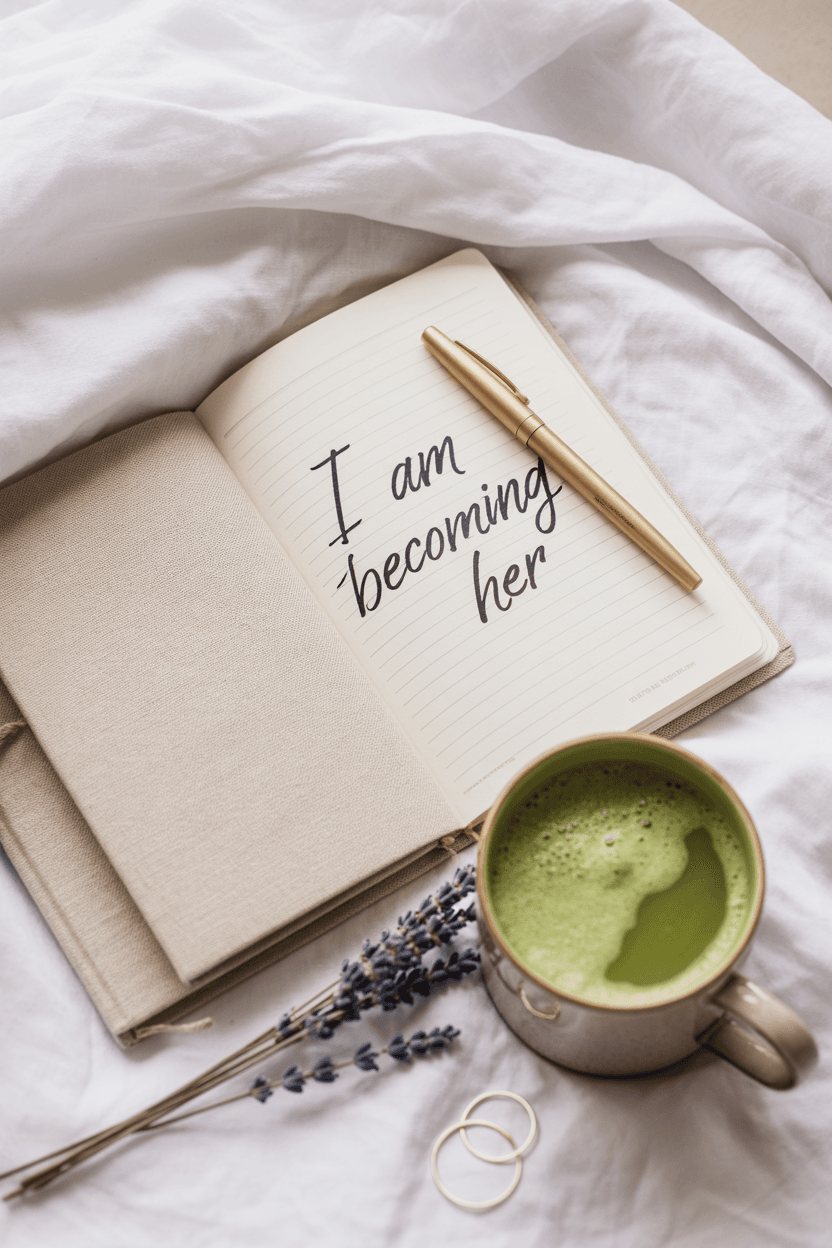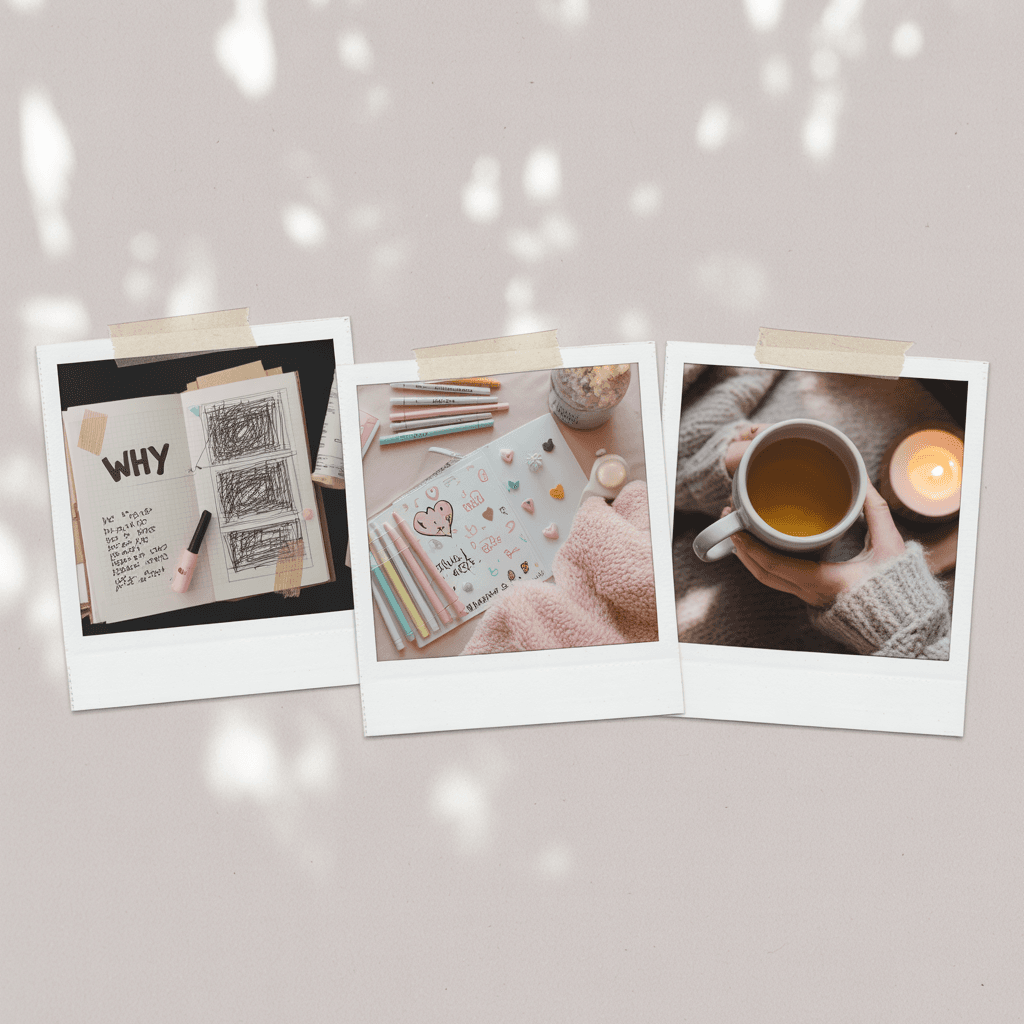Forget slapping magazine clippings on cardboard and calling it a dream life. If you want your vision board to actually mean something, start with your journal.
Because real clarity?
Real goals?
Real change?
They don’t start on Canva or a mood board app. They start with self-awareness—and journaling is how you get there.
This guide walks you through how to combine the visual magic of a vision board with the emotional depth of journaling, so your manifestation practice feels grounded, intentional, and actually yours.
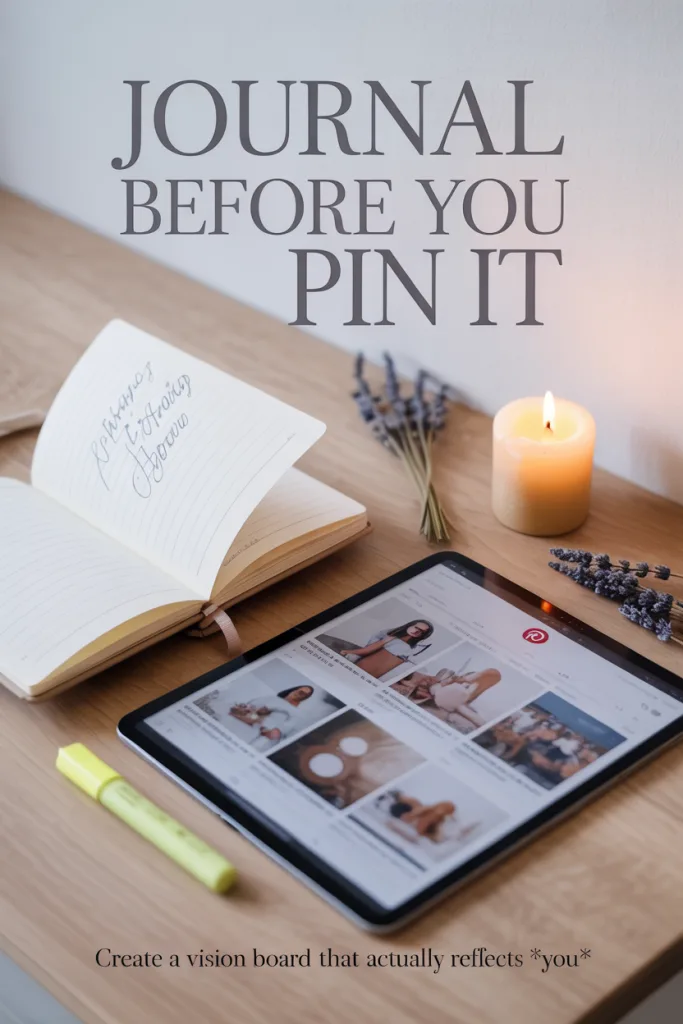
What Even Is a Journaling Vision Board?
A journaling vision board is exactly what it sounds like:
A vision board that doesn’t start with scissors or aesthetics—it starts with questions.
With words. With pages.
You write before you collect images.
You reflect before you manifest.
You build your vision from the inside out.
This method blends visual goal-setting with thoughtful journaling prompts that help you get clear on:
- What you actually want
- Why you want it
- What beliefs might be blocking you
- How to stay emotionally connected to your goals
A study examining classroom journaling found that writing reflections boosted students’ self-efficacy and internal locus of control, supporting the idea that heartfelt journaling isn’t just introspective—it actually strengthens your belief in achieving those vision board goals read it here!.
If you’ve ever made a vision board and then… forgot about it a week later? This is the antidote.
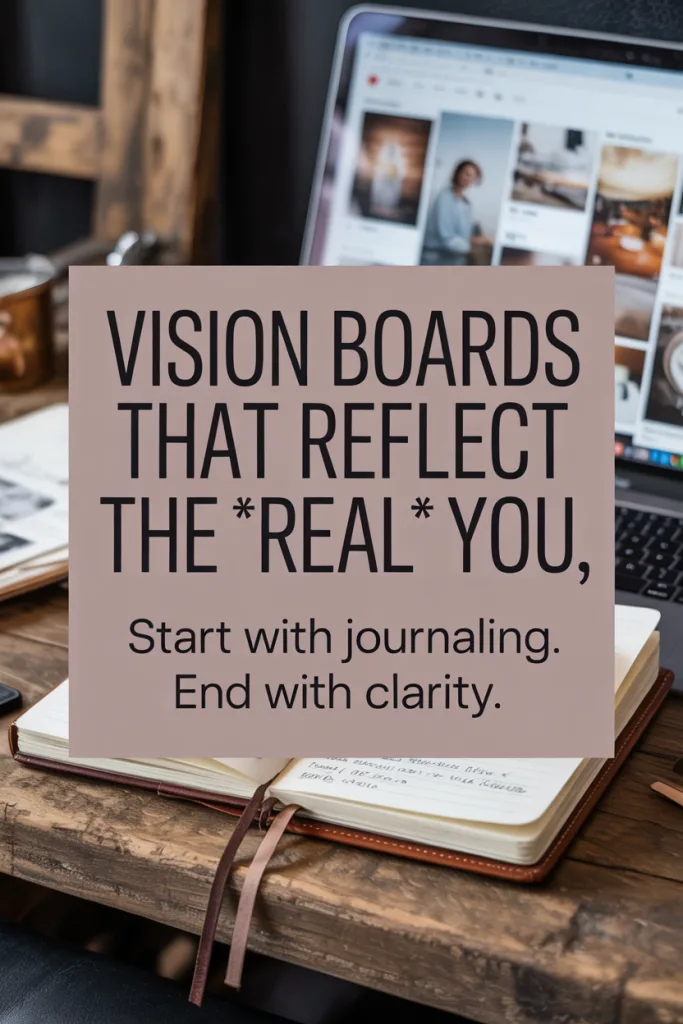
Why It Works (and Doesn’t Feel Fake)
Traditional vision boards can be powerful—but they’re often surface-level.
You pick the “perfect life” images, but they don’t always reflect your actual desires, values, or fears.
Journaling helps you dig into the messy middle:
- ✦ The emotional blocks behind your goals
- ✦ The guilt you carry about wanting more
- ✦ The parts of your vision that feel “too much” or “not enough”
- ✦ The beliefs you’ve outgrown
This is where manifestation stops being a Pinterest aesthetic and becomes a personal practice.
If you need more support in that deeper work, our piece on deep prompts for when you’re in a funk is a great place to start before building anything visual.
Step 1: Journal First, Don’t Scroll First
Before you open Pinterest, open your notebook.
Try these prompts:
- What do I want to feel in the next 6 months?
- What’s something I’ve always wanted but haven’t let myself fully imagine?
- What am I tired of pretending I don’t want?
- What’s already working in my life that I want more of?
- If nothing was “too much,” what would I go after right now?
Don’t filter. Don’t overthink. Let the answers be messy, contradictory, emotional—real.
This is where the heart of your vision lives.
For extra support, check out our guide on journaling for self-discovery. It helps you clarify who you are before deciding what you want.
Research in neuroscience explains how vision boards activate your brain’s Reticular Activating System (RAS), effectively tuning your attention toward opportunities that align with your goals—making journaling before collecting visuals a powerful way to prime your mind first read here.
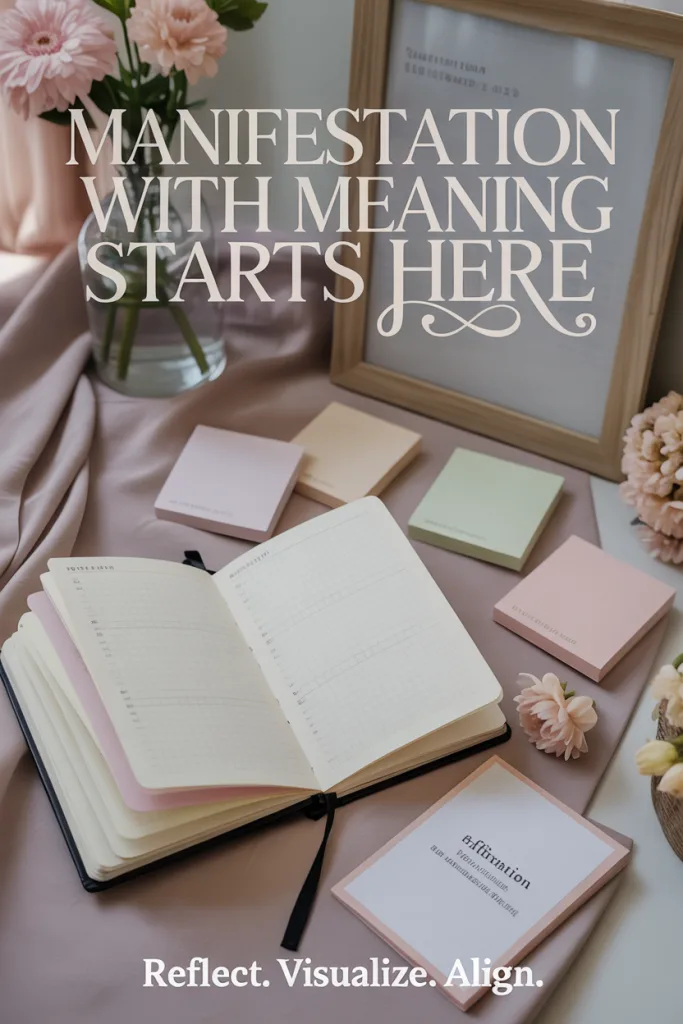
Step 2: Translate Feelings into Images
Now that your journal’s full of clarity (and maybe some chaos—that’s fine too), it’s time to pull visuals that reflect your answers.
Focus on images that align with:
- The energy you want (peaceful, powerful, playful?)
- The version of you you described
- Textures, spaces, and moments that evoke a feeling—not just goals
For example:
- You wrote that you crave rest → pick a photo of a cozy chair by a window
- You’re leaning into courage → pick a bold color, a woman on a mountain, etc.
- You said you want freedom → maybe it’s an open road or blank journal
This part becomes your actual vision board.
Whether it’s digital (Pinterest/Canva) or physical, it’s now rooted in self-trust, not trends.
Step 3: Write With Your Board
Once you’ve assembled your vision board, return to your journal.
Try these prompts to integrate:
- What part of this board scares me the most (and why)?
- What’s one small action I can take toward this today?
- How would this version of me spend her time differently?
- What does my body feel when I look at this vision?
You can revisit this practice every month as a check-in.
Even better? Tape your board into your journal or print it and write directly on it.
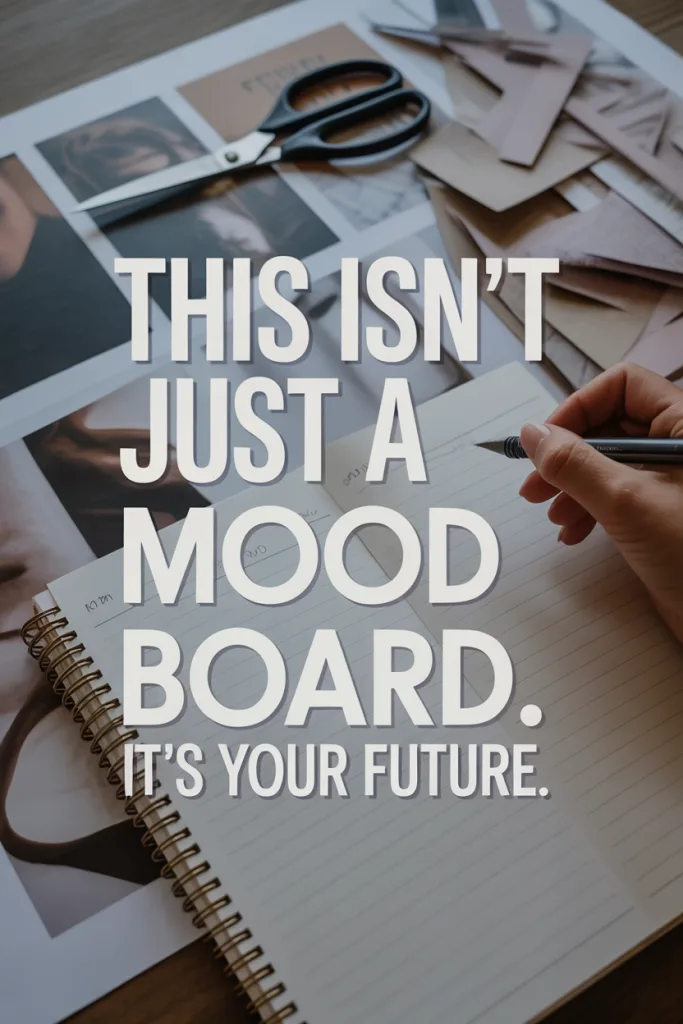
Step 4: Create a Ritual Around It
A vision board isn’t a magic spell.
But when paired with a journaling ritual, it becomes a consistent emotional anchor.
You can return to your vision with:
- ✧ Morning Pages written while looking at your board (learn how here)
- ✧ A monthly check-in where you journal “what’s shifted since I made this?”
- ✧ A gratitude practice where you write about anything that already aligns with your board
- ✧ One-line-a-day journaling that tracks your energy over time
It’s not about obsessing over what hasn’t happened.
It’s about staying connected to what matters most.
Vision Boards Built on Journaling Hit Different
This is more than “cut and paste your dream life.”
This is “write your truth, then visualize it.”
This is “name your fear, then hold space for your desire anyway.”
This is “self-awareness, then manifestation.”
Your vision board doesn’t have to be perfect.
It just has to feel real.

